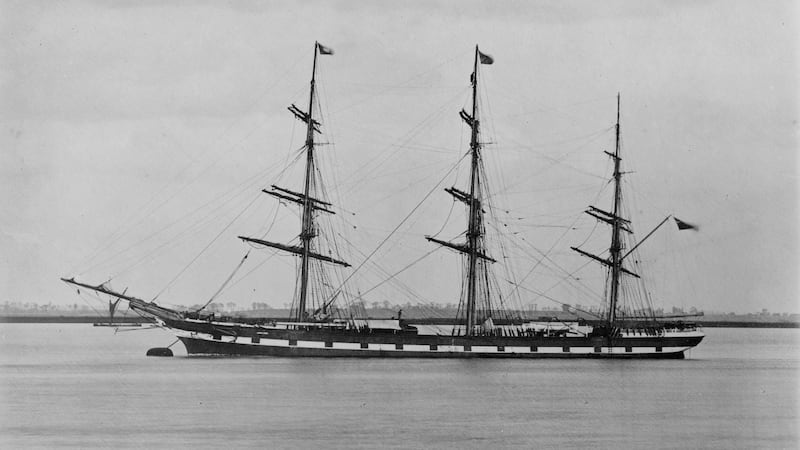The southern coast of the Australian state of Victoria is littered with the remains of several hundred ships. The explorer Matthew Flinders said of it: "I have seldom seen a more fearful section of coastline". Many of the wrecked ships had sailed from the British Isles, often carrying emigrants from Ireland. They were hoping for a better life in a new country, but tragically never reached their destination.
One such ship was the Loch Ard, a clipper with an iron hull that was built on the Clyde in Glasgow and launched in November 1873. This was no coffin ship of the kind that were packed with starving families fleeing the Great Famine, but an elegant vessel with comfortable quarters for middle-class emigrants. The ship left Liverpool for Melbourne on March 2nd, 1878, with a mixed cargo, a crew of 37, and 17 passengers. Amongst these was the Carmichael family, a father, mother, two brothers and four sisters, from Dublin. Dr Carmichael intended establishing a practice in Queensland where the two sons would be set up as farmers.
By June 1st the Lock Ard was nearing its destination. However, the ship was 150km off course and was wrapped in thick fog. As the fog cleared, the captain realised that the ship was perilously close to the limestone cliffs, towards which it was being driven by gale-force winds and the rough seas of the Great Southern Ocean. His efforts to anchor the ship were in vain and the Loch Ard hit the rocks at Mutton Bird Island. It quickly capsized and sank. All but two of the people on board were drowned. One member of the crew, Tom Pearce, a cabin boy, survived by hanging on to an upturned life boat. He managed to swim through the wreckage to the shore. He heard cries for help and spotted Eva Carmichael clinging to some wreckage and dragged her onto the sand in what is now known as Loch Ard gorge. After ensuring Eva was safe, Tom managed to scale the near-vertical cliffs and raise the alarm. They were brought to safety from the gorge by people from nearby farm, Glenample Station.

Once the story of the disaster appeared in the popular press, there was a strong wish amongst the population for a romantic end to the drama. Eva was frequently asked why did she not marry Tom. She explained that there were no feelings between them and they went their separate ways: he returned to work on ships, she to Melbourne. She found herself an unwilling celebrity, but friends helped her recover from the trauma.
Afterwards, she returned to Ireland where eventually she met Thomas Townsend at Blarney Castle, Co Cork, who at that time was living at Garrycloyne. They married in 1884 and brought up three children, eventually moving from Garrycloyne to Cheltenham in England.
The body of Eva's mother Rebecca was washed ashore from the Loch Ard wreck and in her waist band an impressive watch was found. It was made in 1814 by renowned Irish watchmaker James McCabe. It was reputedly commissioned by Dublin City Council to be presented to the Prince Regent, later King George IV, but was eventually acquired by the Carmichael family. Eva gave it to her husband on the occasion of their wedding in Ireland.
This Extraordinary Emigrants article was written by Dr J Patrick Greene, chief executive and museum director of EPIC The Irish Emigration Museum in Dublin’s Docklands, an interactive museum that tells the story of how the Irish shaped and influenced the world










